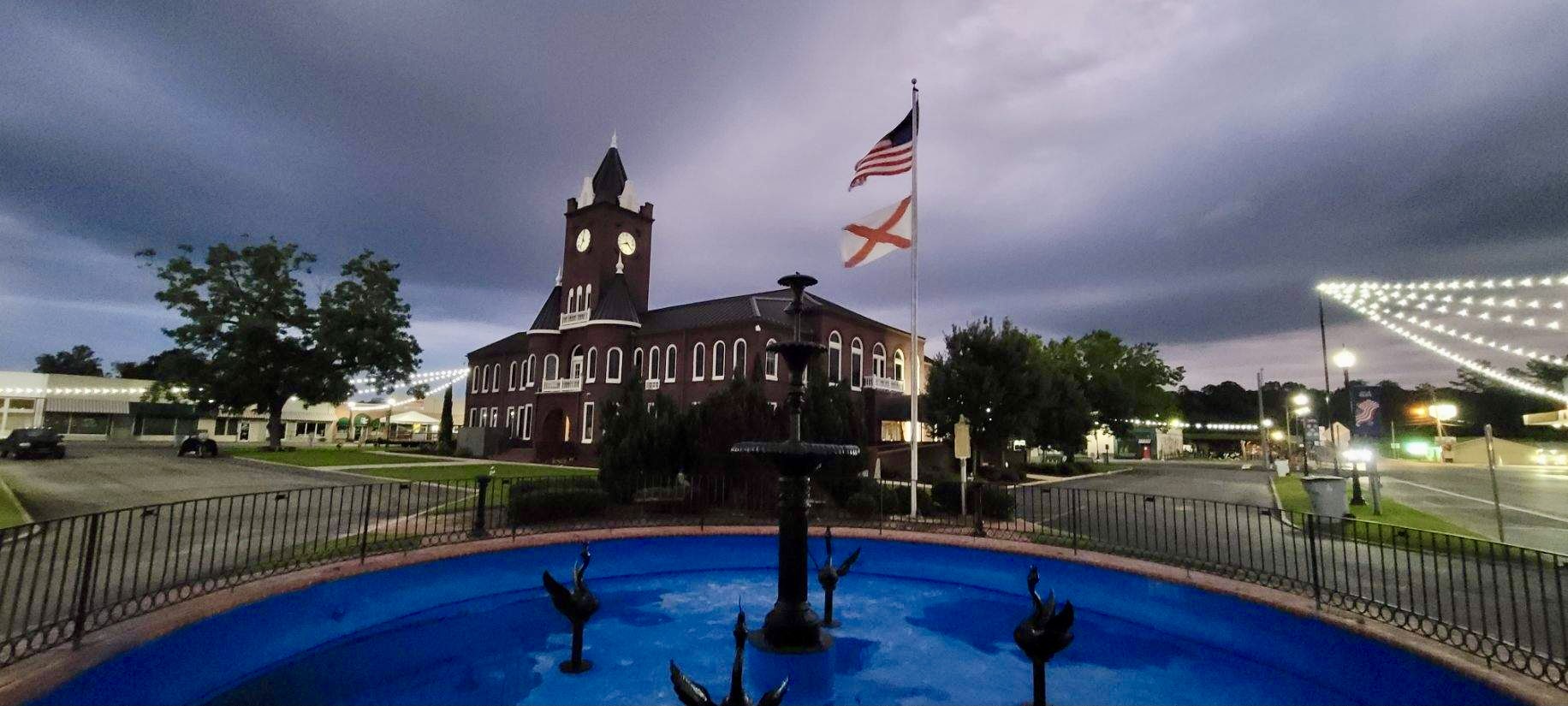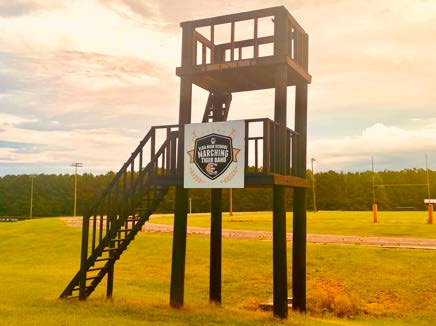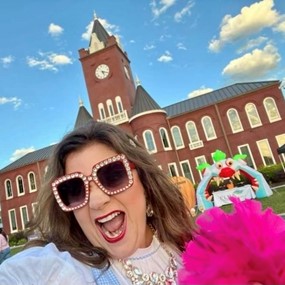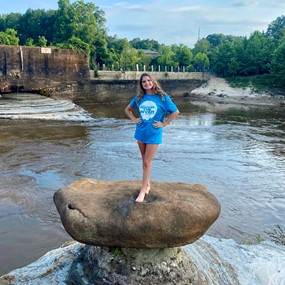Elba the Beautiful
During my first week in town, the “Welcome to Elba” sign invited me to start a quest to understand Elba and its people. So far, I’ve learned that the links between Elba’s natural environment, history, and present efforts form a whole chain of beauty that includes hope and social action.
The Pea River is a local treasure in Elba. Although the river has devastated the town on numerous occasions (1888, 1929, 1990, 1998) through severe flooding, many Elba residents adore the river.

I felt obligated to understand people’s reverence for the river, so I set out for the James E. Grimes River Walk. The trees and greenery blocked my sight, but I was determined to see the river. Yes, I could have walked around to the pier, but I needed to work for it.
I wanted to feel a glimpse of the success a native may have felt when they first happened upon the river. Therefore, I carefully walked down the levee into the trees. I hopped over fallen trees and ducked under branches until I finally reached a clearing.
At last, I saw the river and began to understand Elba’s natural beauty. Bradley Chapman, 17-year-old Elba High School student, said the river is both relaxing and beautiful. However, the river is more than a pretty thing to look at.
 The Pea River is a place for community. “You enjoy the ride, and you got all your buddies,” said Chapman as he described a trip down the river. During the summer season, many Elba and Coffee County residents come to the river for recreational fun.
The Pea River is a place for community. “You enjoy the ride, and you got all your buddies,” said Chapman as he described a trip down the river. During the summer season, many Elba and Coffee County residents come to the river for recreational fun.
Gladys Yelverton, president of the Mulberry District Association Women’s Auxiliary, stated the Pea River evokes the “feeling of having a good life and opportunity.” She said every time she passes by the Pea River she is filled with inspiration, knowing she picked the right place to live.
In fact, this dedication to her community inspired her vision for the Mulberry Heights High School and surrounding neighborhood.
Yelverton, who was elected to the Elba City Council in 1982, said, “Elba has so much potential for growth.” Yelverton said she decided to “improve the citizens’ lifestyle one community at a time.” Her vision is to transform the predominantly African American Mulberry community into the “beacon” it once was.
The Mulberry Heights High School is an old Rosenwald school that once served as the pinnacle of education for Black communities in the South. Yelverton said she and others are working to restore the building to provide family and recreational services like daycare and pre-k education as well as a space to host community events.
The Alabama Historical Commission has given the school a historical site marker, and Yelverton and the Mulberry Community Center, Inc. are currently renovating the building.
Another place of beauty Elba residents point to is the downtown square that surrounds the courthouse. The efforts of active citizens and organizations like Restoration 154, a non-profit organization dedicated to “fostering community, attracting tourism and spurring growth” for Elba, continue to inspire civic action.
Many citizens are restoring buildings and homes, and projects like Restoration 154’s Giving Garden and the Elba Theatre continue to make a positive impact.
 Another symbol of Elba’s beautiful community spirit is the Brooke Chapman Tower at Elba High School. After this beloved Elba resident passed away at age 13 after battling a heart defect, a band conductor’s tower was built in her honor.
Another symbol of Elba’s beautiful community spirit is the Brooke Chapman Tower at Elba High School. After this beloved Elba resident passed away at age 13 after battling a heart defect, a band conductor’s tower was built in her honor.

Her dream was to become a band conductor for the Auburn University band. Elba High School band director Shaun Hammonds collaborated with builders Johnny Senn and Robert Clark to erect a tower in her honor.
Brother Bradley Chapman said it was sweet and thoughtful. The unveiling of the tower remains his most memorable Elba experience.
Tags: Elba




